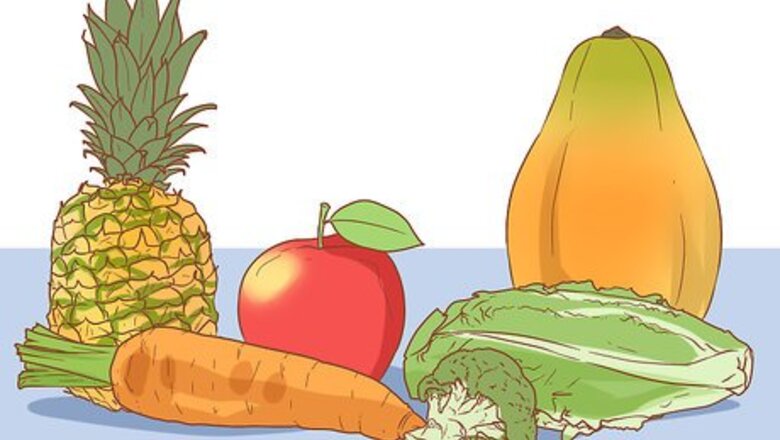
views
Exciting Your Guinea Pig
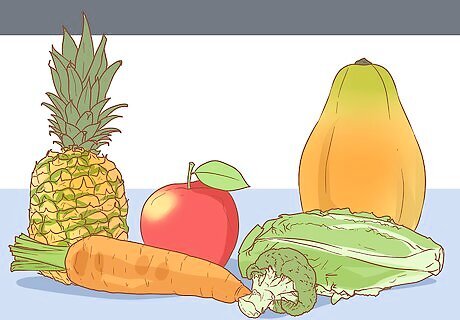
Offer your guinea pig a healthy treat. Guinea pigs love fruits and veggies, so giving your guinea pig a treat once per day may be enough to get it popcorning. However, be careful not to overdo it, since this may give your guinea pig diarrhea. Choose something safe for your guinea pig to eat and offer a few pieces or slices daily. Some treats your guinea pig may enjoy include pea pods, carrots, lettuce leaves, broccoli, cauliflower, apples, oranges, pears, strawberries, blueberries, peaches, papaya, and pineapple. If you notice that your guinea pig tends to popcorn when you give it a certain type of treat, try teaching it to associate the behavior with the treat using a cue word, such as "pop." Simply say "pop" every time you give the guinea pig that treat and after a while, it may popcorn on cue when you say "pop."Tip: You know your guinea pig best! Consider what its favorite treat is and offer that as a way to get it to popcorn.

Place a new toy or enrichment item into your guinea pig’s cage. Guinea pigs love tunnels boxes and ladders. Surprise your guinea pig with a new item and watch to see how it reacts. Your guinea pig might start popcorning at the sight of the new item or it might popcorn after playing with it. You can also try cycling out your guinea pig’s toys and enrichment items to ensure that it always has something different to play with, such as by swapping out a toy with a ladder or tunnel every other day or swapping a plywood box with a tunnel a few days per week.
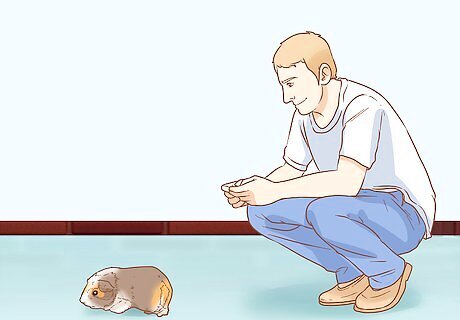
Supervise your guinea pig while it plays outside of its cage. Allowing your guinea pig to play outside of its cage is a great way to encourage popcorning. Make sure the area where you let it play is safe and there are no small holes or spaces that your guinea pig might get into. Also, cover or put up any wires in the area to prevent your guinea pig from chewing them. Ensure that there are no pets in the area that could hurt your guinea pig, such as a cat or dog. This may also frighten your guinea pig, which could prevent it from popcorning out of happiness and lead to your guinea pig behaving fearfully. Never take your guinea pig outside to play. Keep it indoors, and always make sure the temperature is between 65 to 75 °F (18 to 24 °C). Watch your guinea pig closely after you let it out of its cage! It might start to popcorn right away, after it starts to explore, or when it notices you.
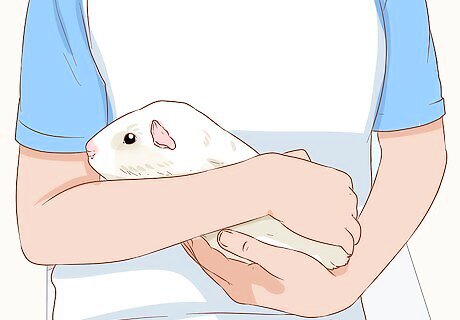
Pick up, hold, and pet your guinea pig gently. A little affection from you can go a long way! If your guinea pig likes to be held, try picking it up and petting it for a few minutes. Support your guinea pig under its chest with 1 hand and under its hindquarters with the other. Stroke it on its back for a few minutes, then gently set it back down in its cage. Stay near your guinea pig’s enclosure after you put it back down and watch to see if it popcorns.
Meeting Its Basic Needs to Keep it Healthy
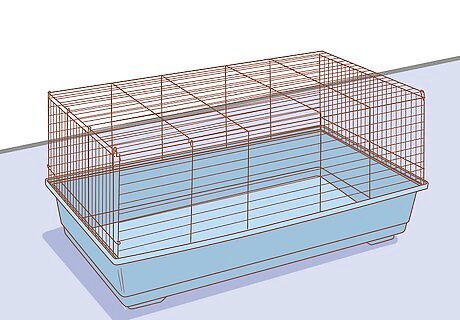
Provide an 18 by 24 by 36 in (46 by 61 by 91 cm) cage. Your guinea pig’s enclosure should be this size or larger to allow it plenty of space to play. Line the bottom of the enclosure with at least 2 in (5.1 cm) of bedding, such as shredded newspaper. Make sure that the enclosure has a solid floor. Wire-bottomed cages put your guinea pig at risk of injury and it will have a harder time walking and hopping in this type of enclosure. Place the cage somewhere warm and free from drafts. Guinea pigs get cold easily, so keeping the cage in a chilly spot will make your guinea pig anxious and unhappy.Tip: If you have more than 1 guinea pig, consider getting a segmented cage. Some guinea pigs like to have their own sleeping quarters.
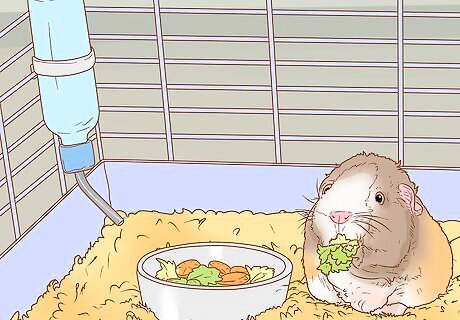
Ensure that your guinea pig is well-fed and hydrated. Guinea pigs require a diet of pellets made especially for guinea pigs. You should also provide your guinea pig with hay and a few lettuce or cabbage leaves daily. Hang a water bottle from the side of your guinea pig’s enclosure so that it can drink water throughout the day as it gets thirsty. Timothy hay is best for guinea pigs and they need an unlimited amount, so make sure there is always lots of hay in your guinea pig's enclosure. Check the package on the guinea pig pellets that you purchase and make sure they contain no less than 16% protein. Be sure to feed your guinea pig its food within 90 days of the milling date printed on the package. This will ensure that your guinea pig’s food is fresh.

Clean your guinea pig’s cage daily and do a full cleaning weekly. Guinea pigs tend to scatter food around their enclosures and they will also poop and pee in random spots around the cage. Use a scoop to remove soiled bedding and uneaten food at the end of each day. Once per week, place your guinea pig into a temporary enclosure while you remove all of the old bedding, wipe down the sides and bottom of the cage with a bleach cleanser, rinse off the bleach cleanser, dry the inside of the enclosure, and add new bedding. Put all of your guinea pig’s items back into the cage when you are done. Your guinea pig might thank you by popcorning around its enclosure when you put it back in, so watch for a few minutes to see.

Provide toys and other enrichment materials. Guinea pigs need a variety of enrichment items to keep them happy and healthy. Make sure that your guinea pig always has a few toys and enrichment items in its enclosure. Some good options include: Ladders Plywood box (for climbing and hiding inside) Tunnels
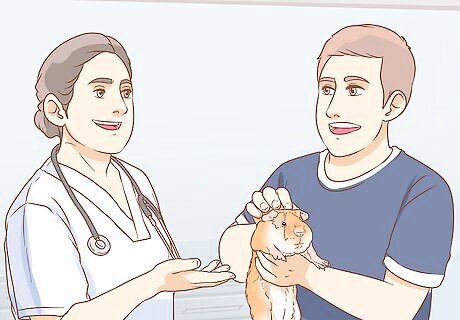
Keep your guinea pig healthy with regular checkups at the vet. If your guinea pig is sick, it will be miserable and won’t feel like popcorning. Take your guinea pig to the vet soon after you get it for a new pet checkup, and then come back for regular checkups once per year, or as recommended by your vet. You should also take your guinea pig to the veterinarian if you notice: A hunched posture A lump or cut Fleas, ticks, or lice Diarrhea or not going to the bathroom at all Weight loss or gain Inactivity Eye or nasal discharge Hair loss Limping Acting uncoordinated










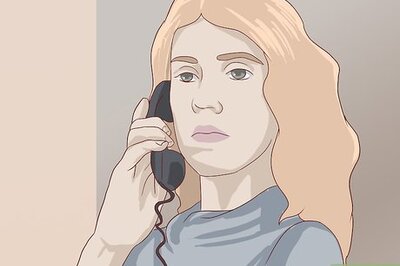
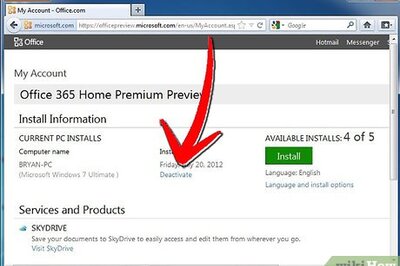


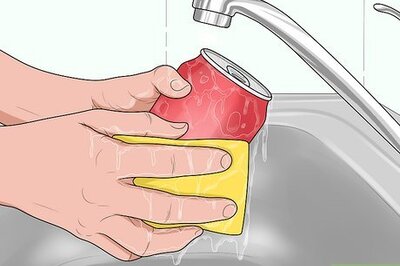





Comments
0 comment